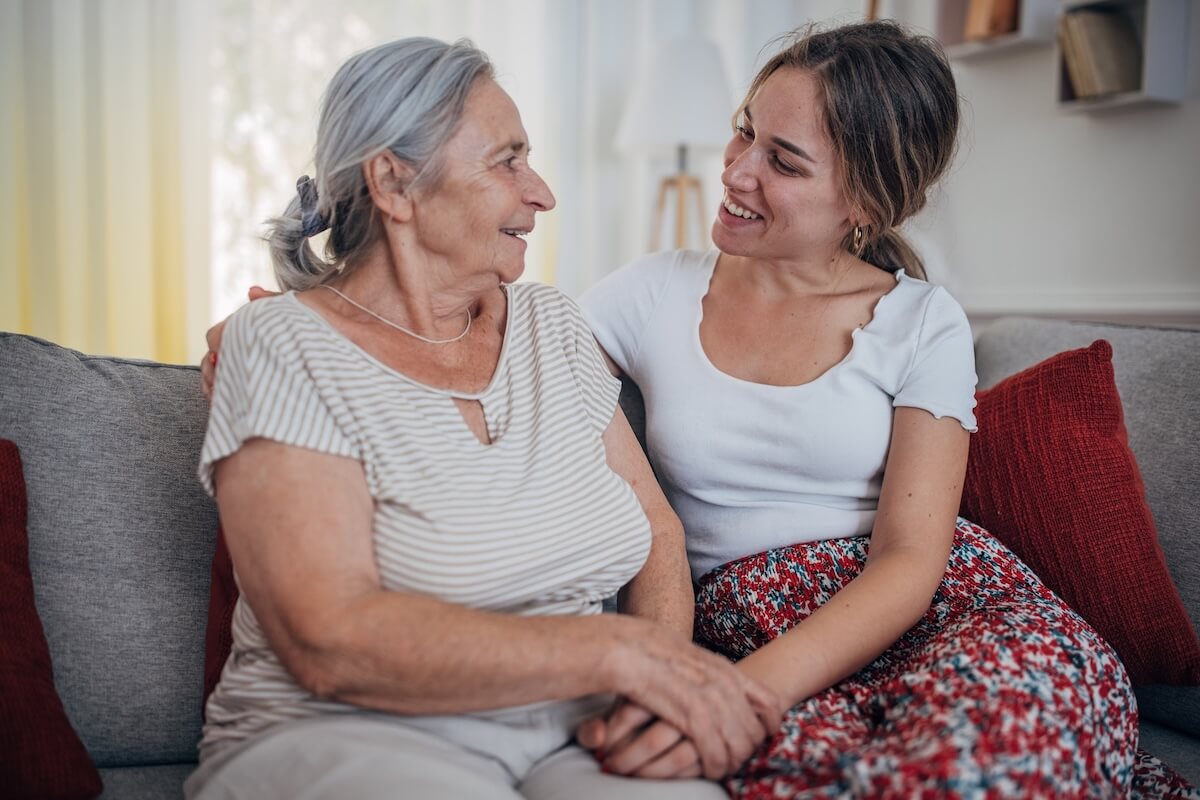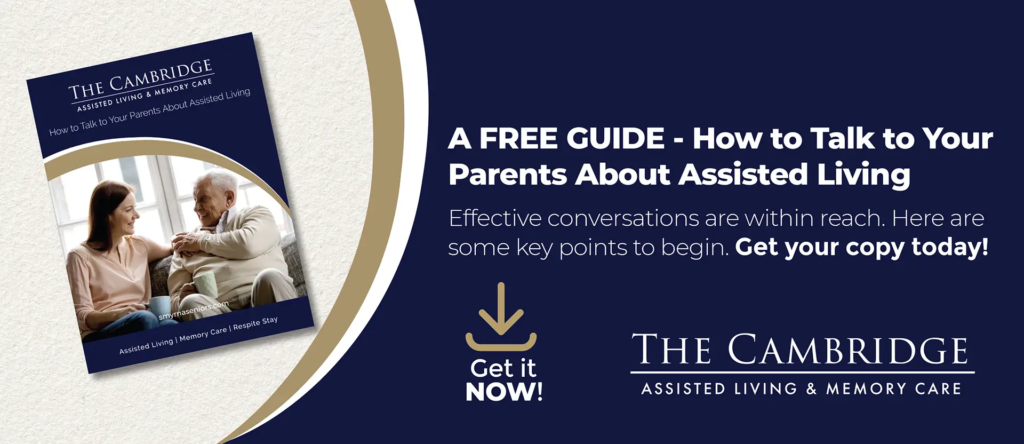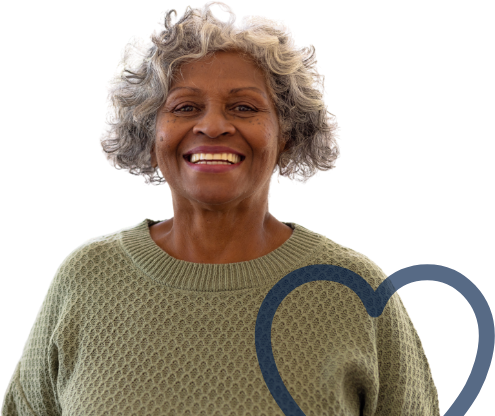We're Dedicated To Ensuring Seniors Live Their Best Life
When It’s Time to Make the Decision for Assisted Living

When families begin exploring care options for an aging loved one, they are often surprised to have more questions than answers. What will life be like for your parent or grandparent in assisted living? Will anyone say “good morning” to them? How safe will they be at night? Does the staff understand how important routines are to seniors? Are meals hot and nutritious? What happens if my loved one suffers a medical emergency?
Making a choice about assisted living is one of the most significant decisions you may ever face. Fortunately, this article can show how a community’s focus on relationships and personalized care can turn a residence into a place where your loved one can feel truly at home. Read on to learn how to ask the right questions, evaluate staff and supervisors, and get a clear sense of what daily life is really like.
What Makes An Assisted Living Community Special?
Is the Quality of Care Personalized?
One of the greatest fears families have is that their loved one will be treated like just another resident, with a one-size-fits-all plan that overlooks their preferences and habits.
In top-tier assisted living communities, personalization of care is the number one priority. Before moving in, staff should ask you about more than just medical records. They should ask about your loved one’s hobbies, favorite meals, morning and evening routines, personal preferences, life experiences, and other interesting connections.
During visits to different assisted living communities, consider asking this question: How do you learn who residents are beyond their physical health needs? The answer should reveal whether personalization is just a slogan or empathy in action.
What About Safety—Can We Really Rest Easy?
No family moves forward without this question. Safety is non-negotiable. You want to know that emergencies are handled quickly, that the building itself minimizes risks, and that staff are alert not only to accidents but to subtle changes in physical and emotional health.
Modern assisted living communities often exceed expectations here. More specifically, look for communities that offer:
- 24/7 On-Site Staff: Around-the-clock coverage by trained professionals—not just a call line, but people physically present.
- Emergency Response Systems: Whether it’s a wearable pendant or discreet wall buttons, help should be seconds away.
- Accessible Design: Details matter—grab bars, slip-resistant flooring, wide doorways, and well-lit common areas all reduce risk.
- Health Monitoring: Staff should be trained to notice changes in appetite, mood, or walking pace—often the first signs of health concerns.
Will They Actually Care About My Loved One’s Well-Being?
You know your loved one as a whole person with a lifetime of experiences, preferences, and quirks. Will strangers understand that your dad always listens to talk radio while reading the morning paper? Will they remember that your mom gets chilled easily and needs an extra blanket most of the time? Will they ask whether your grandfather is an extrovert or an introvert?
Good assisted living communities create detailed care plans, but first-rate communities create comprehensive resident profiles that ensure your characteristically reserved-father isn’t overwhelmed with cheerful chatter first thing in the morning, or that your social butterfly-mother gets plenty of social interaction throughout the day.
Ask communities about their process for learning about residents. Request to see sample care plans (with personal information removed), and find out how staff members share information and insights between shift changes. Their answers should, hopefully, tell you whether they view residents as special individuals who deserve the best life has to offer them.
How Do I Know They’ll Be Safe?
Concerns about a loved one’s safety are often the first reason families begin looking into assisted living. Common worries include frequent falls, medication mishaps, recurring episodes of confusion, or a particularly frightening event where a loved one wandered away from home.
Rest assured, assisted living communities integrate multiple safeguards into the layout of the community that are designed to prevent residents from falling, wandering, or putting themselves in harm’s way. Safety measures you will find in the best assisted living communities include:
24/7 Staff: Having staff present in all areas of the community doesn’t mean someone is constantly hovering over your loved one. What it does mean is that trained professionals are always present and alert for signs of medical or emotional distress in residents. Staff members also check on residents regularly, especially during medication times, meals, and daily walks throughout the community.
Smart Technology: Some communities use discrete monitoring that tracks normal movement patterns and alerts staff to unusual changes in higher-risk residents.
Design That Helps: Everything from lighting to flooring is implemented with safety in mind. Hallways are wide enough for wheelchairs and walkers. Bathrooms have grab bars and walk-in showers. Outdoor areas are level and well-lit. However, the community shouldn’t have an “institutional” appearance. Instead, they should incorporate safety features seamlessly into attractive, home-like settings.
Preventing Problems: Staff who know residents well become experts at spotting trouble before it happens. They notice when someone seems unsteady, when their appetite changes, or when disoriented behaviors increase. By quickly recognizing subtle changes in a resident’s health or behavior early, staff may avoid a crisis that could have been more serious.
Professional Medication Management: Licensed nurses monitor residents who take medication for signs of side effects or drug interactions. They perform blood pressure and blood sugar checks if medications change. Assisted living nurses actively monitor each resident’s health, which generally results in fewer doctor visits and gives you the peace of mind knowing a professional is closely watching your loved one.

Let’s Talk About Money
Start by calculating what it actually costs for your loved one to remain in the home safely. Include housing costs, utilities, food, transportation, housekeeping, yard work, home maintenance, and any paid caregiving expenses in your calculations. In addition, consider hidden costs, such as your time off work for doctor appointments and emergencies. In many cases, families discover the gap isn’t as large as they initially thought.
More importantly, consider what quality of life looks like in each scenario. Staying home might cost less money, but what about the cost of worry, isolation, and declining health? What’s the value of professional care, social interaction, engaging activities, and peace of mind?
Keep in mind, communities’ cost structure may vary, but here’s a look at what your monthly rental rate typically covers:
- Complete Housing Package: Rental of the apartment, utilities, maintenance, housekeeping, and security.
- All Meals: Three prepared meals daily, usually with select choices and special diet accommodations.
- Personal Care: Help with bathing, dressing, medications, and mobility as needed. Care levels in assisted living can usually be adjusted without requiring your loved one to transition to another community.
- Transportation: Communities provide transportation for residents to medical appointments, pharmacy pick-ups, and community outings.
- Activities and Programs: Communities should offer a full calendar of appealing social, educational, and recreational opportunities designed for seniors.
- Healthcare Coordination: Staff who understand the medical, emotional, and psychological needs of seniors should be available to communicate with doctors and families on an as-needed basis.
Ask for detailed cost breakdowns, information about policies regarding costs associated with levels of care, and whether the community offers financial assistance programs and payment options.
How Can You Be Confident You’ve Chosen the Right Community?
Don’t ever base your decision to move to any assisted living community solely on websites or brochures. Schedule multiple visits at different times of day to get a full sense of daily life in each community. Eat a meal in the dining room, observe several programs or activities. If possible, speak to residents and family members about their experiences.
Note how residents interact with one another, whether staff know everyone’s names and routines, and how comfortable people seem to be as they go about their daily lives. In some cases, you may learn how staff manage residents who are having a challenging day or watch them interact with residents who may not see eye to eye about an upcoming activity.
If you can picture your loved one smiling, participating, and feeling at home in a specific assisted living community, it’s likely you’ve found an ideal new home for your loved one.
Move Forward with Peace of Mind for Your Loved One
Taking that first step towards transitioning a senior loved one into a different living space can be difficult for families. Visiting a local assisted living community and speaking with a senior care expert can help alleviate many of your concerns. Have your questions answered, address your worries, hear directly from residents, and begin the process feeling confident, optimistic, and informed.

